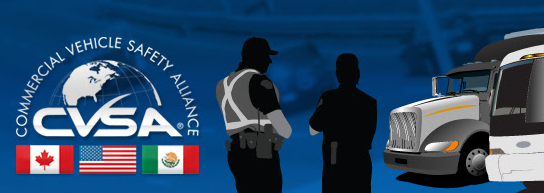International Roadcheck Has Begun

CVSA-certified inspectors will primarily conduct the North American Standard Level I Inspections
Commercial motor vehicle inspectors will conduct inspections of large trucks and motorcoaches for 72 hours as part of the Commercial Vehicle Safety Alliance’s (CVSA) International Roadcheck annual enforcement initiative. Commercial motor vehicles and their drivers will be checked at inspection sites, weigh stations, and strategic and roving patrol locations on public roadways in Canada, Mexico and the United States.
Each year, International Roadcheck places special emphasis on a category of violations. This year’s focus is steering and suspension systems. While compliance of these vehicle components is always part of the North American Standard Inspection Program, CVSA is highlighting steering components and suspension systems this year as a reminder of their importance to highway safety.
International Roadcheck is a high-visibility enforcement initiative meant to call attention to the everyday hard work of commercial motor vehicle inspectors and the many safety-compliant large truck and motorcoach drivers. Since its inception in 1988, more than 1.6 million roadside inspections have been conducted during International Roadcheck.
During International Roadcheck, CVSA-certified inspectors will primarily conduct the North American Standard Level I Inspection, a 37-step procedure that includes an examination of driver operating requirements and vehicle mechanical fitness.
The vehicle aspect of an inspection includes checking critical vehicle inspection items such as: brake systems; cargo securement; coupling devices; driveline/driveshaft; driver’s seat (missing); exhaust systems; frames; fuel systems; lighting devices (headlamps, tail lamps, stop lamps, turn signals and lamps/flags on projecting loads); steering mechanisms; suspensions; tires; van and open-top trailer bodies; wheels, rims and hubs; windshield wipers. Inspectors also check other vehicle components such as rear impact guards as part of the vehicle inspection. Additional items on buses, motorcoaches, passenger vans or other passenger-carrying vehicles include emergency exits, electrical cables and systems in engine and battery compartments, and seating (temporary and aisle seats).
The driver portion of the inspection will include evidence of annual inspection, and review of the driver’s license (operating credentials), Medical Examiner’s Certificate and Skill Performance Evaluation Certificate (if applicable), the driver’s record of duty status and vehicle inspection report(s) (if applicable). Inspectors will also check drivers for seat belt usage, alcohol and/or drug impairment, sickness or fatigue.
If no critical vehicle inspection item violations are found during the Level I Inspection, a CVSA decal is applied. However, when a required rear impact guard is inspected, a CVSA decal will not be issued if violations are present. If an inspector identifies critical vehicle inspection item violations that meet the North American Standard Out-of-Service Criteria, that vehicle will be rendered out of service until repairs are made.
Category: Driver Stuff, Featured, General Update, News, Safety










